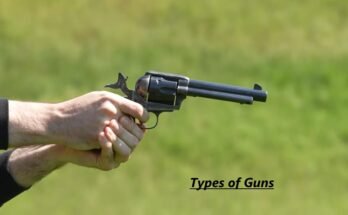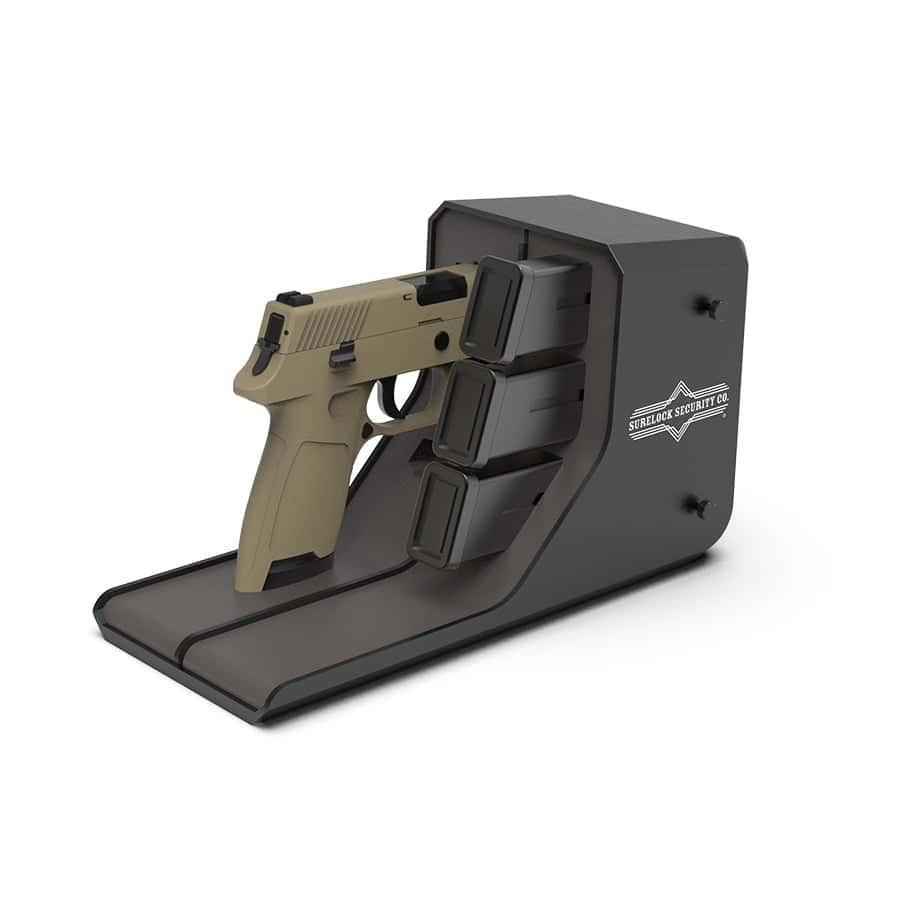The image of your gun safe emerging unscathed from a devastating house fire is powerful. It represents the preservation of valuable firearms, irreplaceable heirlooms, critical documents, and peace of mind. But when manufacturers advertise safes as “30-minute,” “60-minute,” or even “120-minute” fireproof, what does that really mean? And crucially, how long should your gun safe be fireproof to offer genuine protection?
The answer isn’t a simple number. It’s a nuanced understanding of fire ratings, real-world fire dynamics, and your specific needs. Let’s cut through the marketing hype and find the fireproof duration that truly safeguards your valuables.
The Critical Myth: “X Minutes” Doesn’t Tell the Whole Story
The biggest misconception is that a “60-minute fireproof safe” guarantees the contents will survive untouched for exactly 60 minutes in any fire. This is dangerously misleading. Fire ratings are determined under specific laboratory conditions defined by testing standards. The two most respected standards are:
-
UL (Underwriters Laboratories) Fire Ratings (e.g., UL Class 350 – 1 Hour): This is the gold standard.
-
UL 72 Standard for Tests for Fire Resistance of Record Protection Equipment: This rigorous test subjects the safe to a furnace following a precise time-temperature curve. For a “1-Hour” rating (UL Class 350 – 1 Hour):
-
The furnace reaches 1550°F (843°C) within 1 hour.
-
The internal temperature of the safe must stay below 350°F (177°C) for the entire rated period (plus a safety buffer).
-
Crucially, the safe must also pass a 30-foot drop test while hot and still maintain the internal temperature limit.
-
-
Why 350°F? Paper chars around 400°F, and magnetic media degrades around 125-150°F. 350°F provides a safety margin to protect paper documents, cash, and most digital media. Firearms themselves can withstand higher temperatures, but accessories (scopes, stocks, optics) and ammunition have lower thresholds.
-
-
ETL (Intertek) Fire Ratings: ETL offers similar testing to UL standards (often using UL 72 or comparable). While generally reputable, UL is often seen as the slightly more stringent benchmark due to its long history and specific drop test requirement.
-
“In-House” or Generic “Fire Ratings”: Beware! Many safes, especially lower-cost options, tout “60-Minute Fire Protection” based solely on internal manufacturer testing or vague claims. These lack independent verification and often don’t specify the internal temperature limit, the furnace curve, or include impact testing. These ratings are essentially meaningless for reliable protection.
So, How Long Should It Be? Understanding Real Fire Dynamics and Your Needs
Now that we know ratings aren’t simple timers, let’s determine what duration makes sense:
-
The Minimum Realistic Protection: 30-45 Minutes (UL/ETL Verified)
-
Why? It takes time for a fire to fully develop and for firefighters to arrive. A verified 30-45 minute rating provides a crucial buffer for smaller fires or faster response times.
-
Best For: Those primarily storing firearms (which are more heat-tolerant) in lower-risk areas, or as a secondary layer of protection where fire risk is perceived as moderate. *Caution: Generic “30-minute” ratings are likely insufficient.*
-
-
The Recommended Standard: 60 Minutes (UL/ETL Verified – Class 350)
-
Why? This is widely considered the practical baseline for serious protection.
-
It aligns with the typical time for a room to reach “flashover” (where all combustible surfaces ignite simultaneously).
-
It provides a realistic window for fire department arrival in many suburban/urban areas.
-
The 350°F internal limit effectively protects paper, electronics, and firearm accessories alongside the guns themselves.
-
-
Best For: Most gun owners. It offers significant protection for firearms, important documents (titles, deeds, passports), cash, family heirlooms, and digital media backups without excessive cost.
-
-
Enhanced Protection for High Value or Higher Risk: 90-120 Minutes (UL/ETL Verified – Class 350)
-
Why? Provides a much larger safety margin.
-
Crucial for homes in rural areas with longer fire department response times.
-
Essential for protecting highly sensitive items (irreplaceable documents, rare collectibles, valuable media).
-
Provides extra security against hotter, longer-lasting fires (e.g., those fueled by synthetic materials common in modern homes).
-
-
Best For: Collectors of high-value firearms/optics, those storing irreplaceable items, homes in remote locations, or owners seeking maximum peace of mind. Be prepared for a significant increase in cost and weight.
-
Beyond the Clock: Factors That Make a Safe Truly Fireproof
The rating duration is just one piece. The quality of the fireproofing is paramount:
-
Fireboard Type & Thickness: The insulation lining the safe walls, door, and ceiling is key. High-quality, thick fireboard (like Palusol® which expands when heated, or cementitious board) absorbs and deflects heat far better than thin gypsum or inferior materials. Look for specs on fireboard thickness (e.g., 1″ vs 1.5″ vs 2″).
-
Seals: Intumescent Door Seals: These seals expand dramatically (often 5-10x their size) when heated, sealing gaps around the door to prevent superheated gases and smoke from entering. Vital for maintaining the internal temperature limit. Check for UL-listed seals.
-
Steel Gauge & Construction: Thicker steel (lower gauge number – e.g., 10-gauge vs 12-gauge) provides better structural integrity during the fire and the crucial drop test. A well-constructed box without gaps or weak points is essential.
-
Door Fit & Locking Bolts: A tight-fitting door with multiple, thick active locking bolts (especially on the hinge side) prevents warping and maintains the seal under extreme heat and impact.
-
Waterproofing (Often Overlooked!): The water used by firefighters can cause catastrophic damage. Look for safes with water-resistant seals or specific waterproof ratings (e.g., UL 72 Water Submersion test). Palusol® seals also provide excellent water resistance.

Choosing Your Fire Rating: A Practical Guide
Ask yourself these questions:
-
What am I protecting? (Just firearms? High-value optics? Critical paper documents? Digital media? Family photos? Ammunition?)
-
What is the replacement value (financial and sentimental)?
-
Where do I live? (Urban/suburban with fast fire response? Rural area?)
-
What is my budget? (Higher ratings = significantly higher cost and weight).
-
What are the safe’s OTHER features? (Security rating, size, organization, warranty).
Recommendations:
-
Absolute Minimum: Verified UL/ETL 30-45 min (Class 350). Be cautious and understand the limitations.
-
Strong Recommendation for Most: UL/ETL 60 min (Class 350). This offers the best balance of protection, cost, and practicality for safeguarding firearms and critical items.
-
For Maximum Security & Peace of Mind: UL/ETL 90-120 min (Class 350). Ideal for high-value collections, irreplaceable items, or remote locations.
Key Brands Known for High Fire Protection (Look for UL Ratings):
-
Liberty Safe (Centurion, Colonial series offer good 45-60 min UL; Presidential/National Security offer higher)
-
Fort Knox (Renowned for thick steel and fireboard – many models UL 60-120 min)
-
Browning (ProSteel series – various UL ratings)
-
AMSEC (BF & RF series – high-end UL rated)
-
Sturdy Safe (Focus on steel and fireproofing – UL options)
-
Champion Safe (Triumph series offers UL 60 min)
Conclusion: It’s Not Just Time, It’s Verified Performance
Don’t settle for a generic “fireproof” claim or an unverified hour rating. The ideal fireproof duration for your gun safe is a UL or ETL verified 60-minute (Class 350) rating. This benchmark provides scientifically tested protection against the heat, time, and impact realities of a typical house fire, safeguarding both your firearms and other critical valuables at a reasonable cost.
Investing in a safe with a verified rating from UL or ETL, constructed with quality fireboard, thick steel, and intumescent seals, is investing in true peace of mind. Remember, in a fire, your safe isn’t just protecting guns; it’s protecting your legacy. Choose the protection level that matches your risk and your treasures. Always prioritize verified ratings over marketing numbers.



